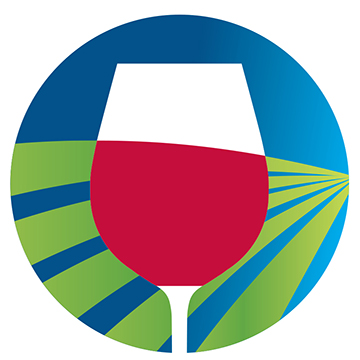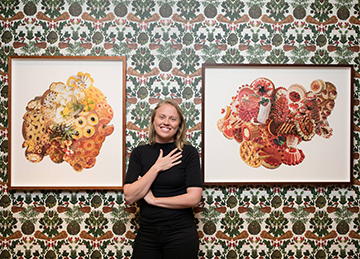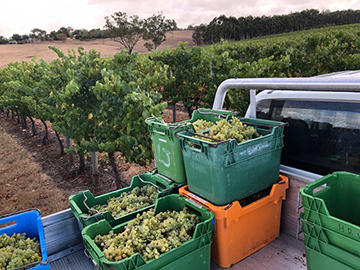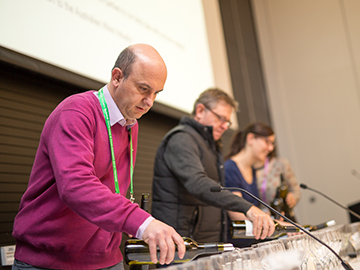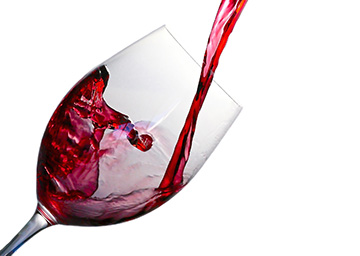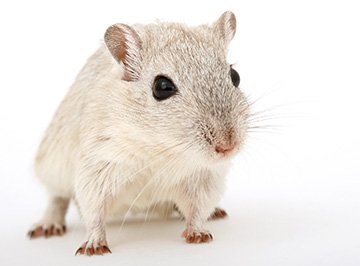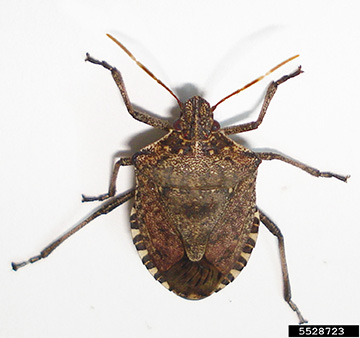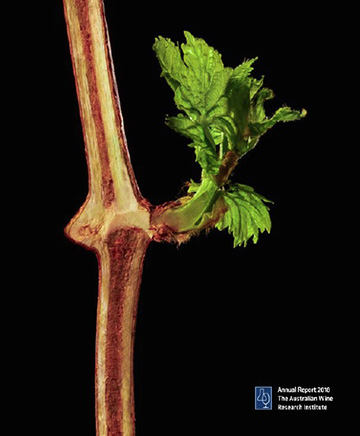Order the latest AWRI staff publications online
Accessing the latest AWRI publications is easy. Visit the AWRI Publications web page to:
- View the 10 most recent AWRI staff publications and order the articles online from the AWRI Library
- Search the staff publications database
- Read the full-text of ‘Technical Notes’ from Technical Review (PDF format)
- Read the full-text of ‘AWRI reports’ published in Wine & Viticulture Journal (PDF format).
- Read the full text of ‘Ask the AWRI’ and ‘Vineyards of the world’ columns
A list of AWRI publications published since the last eNews is included below:
2042 Bucher, T., Deroover, K., Stockley, C. Low-alcohol wine: A narrative review on consumer perception and behaviour. Beverages 4(4): 1-9; 2018
2043 Kontoudakis, N., Schmidtke, L.M., Bekker, M.Z., Smith, M., Smith, P.A., Scollary, G.R., Wilkes, E.N., Clark, A.C. Analytical strategies for measurement of different forms of Cu and Fe in wine: Comparison between approaches in relation to wine composition. Food Chem. 274: 89-99; 2019.
2044 Varela, J., Varela, C. Microbiological strategies to produce beer and wine with reduced ethanol concentration. Curr. Opin. Biotechnol. 56: 88-96; 2019.
2045 Godden, P. Ask the AWRI: Extended post-fermentation maceration. Aust. N.Z. Grapegrower Winemaker (657): 70-71; 2018.
2046 Johnson, D. Adapting to forces of global change. WBM (November/December): 66-67; 2018.
2047 Tang, J., Petrie, P.R., Whitty. M. Modelling relationships between visible winegrape berries and bunch maturity. Aust. J. Grape Wine Res. 25(1): 116-126; 2019.
2048 Roach, M.J., Johnson, D.L., Bohlmann, J., van Vuuren H.J.J., Jones, S.J.M., Pretorius, I.S., Schmidt, S.A., Borneman, A.R. Population sequencing reveals clonal diversity and ancestral inbreeding in the grapevine cultivar Chardonnay. PLoS Genetics 14 (11: e1007807): 1-24; 2018.
2049 Zhou, J., Zhang, Z., Lu, M., Xiao, H., Habili, N., Li, S. Complete nucleotide sequence of a new virus, peach chlorotic leaf spot virus, isolated from flat peach in China. Arch. Virol. 163: 3459-3461; 2018.
2050 Mierczynski, P., Mierczynska, A., Ciesielski, R., Mosinska, M., Nowosielska, M., Czylkowska, A., Maniukiewicz, W., Szynkowska, M.I., Vasilev, K. High active and selective Ni/CeO2–Al2O3 and Pd–Ni/CeO2–Al2O3 catalysts for oxy-steam reforming of methanol. Catalysts 8(9): 1-20; 2018.
2051 Roach, M.J., Schmidt, S.A., Borneman, A.R. Purge haplotigs: allelic contig reassignment for third-gen diploid genome assemblies. BMC Bioinformatics 19 (460): 1-10; 2018.
2052 Gombau, J., Nadal, P., Canela, N., Gómez-Alonso, S., García-Romero, E., Smith, P., Hermosín-Gutiérrez, I., Canals, J.M., Zamora, F. Measurement of the interaction between mucin and oenological tannins by Surface Plasmon Resonance (SPR); relationship with astringency. Food Chem. 275: 397-406; 2018.
2053 Bekker, M.Z., Kreitman, G.Y., Jeffery, D.W., Danilewicz, J.C. Liberation of hydrogen sulfide from dicysteinyl polysulfanes in model wine. J. Agric. Food Chem. 66 (51): 13483–13491; 2018.
2054 Li, S., Bindon, K., Bastian, S., Wilkinson, K. Impact of commercial oenotannin and mannoprotein products on the chemical and sensory properties of Shiraz wines made from sequentially harvested fruit. Foods 7(204): 1-17; 2018.
2055 Hayasaka, Y. Quantitative analysis of mousy off-flavour compound 2-acetyl tetrahydropyridine in wine using liquid chromatography tandem mass spectrometry interfaced with atmospheric chemical ionisation. J. Chromatogr. A 10.1016/j.chroma.2018.12.047; 2018.
2056 Petrie, P.R., Teng, B., Smith, P.A., Bindon, K.A. Managing high Baume juice using dilution. Wine Vitic. J. 34(1): 36-37; 2019.
2057 Costello, P., Jordans, C., Schmidt, S., Herderich, M., Johnson, D. Trials and tribulations of MLF: can timing of inoculations and MLF nutrients help? Wine Vitic. J. 34(1): 38-41; 2019.
2058 Dry, P. Pinotage. Wine Vitic. J. 34(1): 61; 2019.
2059 Longbottom, M. Reducing vineyard energy use. Aust. N.Z. Grapegrower Winemaker (659): 44-45; 2018.
2060 Coulter, A. Understanding molecular SO2 calculators. Aust. N.Z. Grapegrower Winemaker (660): 62-63; 2019.
2061 Varela, C., Bartel, C., Roach, M., Borneman, A., Curtin, C. Brettanomyces bruxellensis SSU1 haplotypes confer different sulfite tolerance when expressed in a Saccharomyces cerevisiae SSU1 null mutant. Appl. Environ. Microbiol. doi:10.1128/AEM.02429-18
2062 Stockley, C. Ask the AWRI: Will I live longer if I drink alcohol? Aust. N.Z. Grapegrower Winemaker (661): 68-69; 2019.
2063 Avramova, M., Grbin, P., Borneman, A., Albertin, W., Masneuf-Pomarède, I., Varela, C. Competition experiments between Brettanomyces bruxellensis strains reveal specific adaptation to sulfur dioxide and complex interactions at intraspecies level. FEMS Yeast Res. doi.org/10.1093/femsyr/foz010; 2019.
2064 Peter, J.J., Watson, T.L., Walker, M.E., Gardner, J.M., Lang, T.A., Borneman, A., Forgan, A., Tran, T., Jiranek, V. Use of a wine yeast deletion collection reveals genes that influence fermentation performance under low-nitrogen conditions. FEMS Yeast Res. doi: 10.1093/femsyr/foy009; 2018.
2065 Petrie, P.R., Wang, Y., Liu, S., Lam, S., Whitty, M.A., Skewes, M.A. The accuracy and utility of a low cost thermal camera and smartphone-based system to assess grapevine water status. Biosystems Eng. 179: 126-139; 2019.
2066 Di Lorenzo, C., Stockley, C., Colombo, F., Biella, S., Orgiu, F., Dell’Agli, M., Restani, P. The role of wine in modulating inflammatory processes: a review. Beverages 4(4): 1-17; 2018.
2067 Bucher, T., Deroover, K., Stockley, C. Low-alcohol wine: a narrative review on consumer perception and behaviour. Beverages 4(4): 1-9; 2018.
2068 Smith, H.M., Clarke, C.W., Smith, B.P., Carmody, B.M., Thomas, M.R., Clingeleffer, P.R., Powell, K.S. Genetic identification of SNP markers linked to a new grape phylloxera resistant locus in Vitis cinerea for marker-assisted selection. BMC Plant Biology 18: 1-13; 2018.
2069 Kutyna, D., Borneman, A.R. Heterologous production of flavour and aroma compounds in Saccharomyces cerevisiae. Genes 9(7): 1-15; 2018.
2070 Wahono, S.K., Cavallaro, A., Vasilev, K., Mierczynska, A. Plasma polymer facilitated magnetic technology for removal of oils from contaminated waters. Environ. Pollution 240: 725-732; 2018. |



